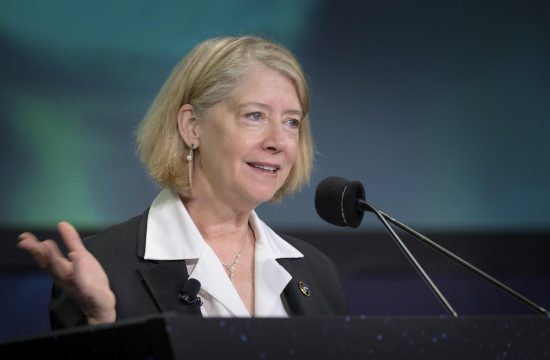On Earth Day, April 22, NASA and the National Science Foundation (NSF) celebrate 20 years of international cooperation and collaboration to engage students, scientists, and teachers in 114 countries in the scientific exploration of Earth’s environments and climate.
The Global Learning and Observations to Benefit the Environment (GLOBE) science and education program, created on Earth Day in 1995, connects students, teachers, and professional and citizen scientists with opportunities to participate in science data collection by conducting real, hands-on science in their local communities.
“NASA has been one of the proud sponsors of GLOBE since its inception, and we’re pleased to be a part of a program that helps inspire future leaders and adds to knowledge of our planet,” said NASA Administrator Charles Bolden. “GLOBE provides students and the public worldwide with the opportunity to contribute meaningfully to our understanding of the global environment and climate. The program not only engages students in learning about their local environment, it also empowers them to play an active role in adding to global data about our home planet.”
This week, schools around the world are observing the program’s 20th anniversary and Earth Day with special science activities, including a data entry challenge to collect extensive Earth science data via a new mobile app.
“The National Science Foundation knows the importance of training more students in the STEM fields,” said France Córdova, director of the NSF in Arlington, Virginia. “We are excited and delighted at how GLOBE stimulates curiosity, sparks interest in STEM careers, and above all, inspires in so very many students a love of science that will last a lifetime.”
GLOBE program activities, developed by the scientific community and validated by teachers, focus on Earth science topics with research-quality methods. The interdisciplinary activities support current learning standards and yield data that are used by working scientists. Getting students involved in the project-based investigations encourages them to make connections between their local environment and the entire Earth system, providing a global perspective.
Supported by the U.S. Department of State and the National Oceanic and Atmospheric Administration, GLOBE also provides a platform for conducting NSF-sponsored STEM education research on new models for professional development of STEM educators and career technical education.
Many GLOBE partners are sponsoring local activities to mark the anniversary. Students in Colorado are collecting soil, vegetation, water chemistry and stream flow data from Rocky Mountain National Park. West Virginia students are joining NASA’s Earth Day celebration at Washington’s Union Station on April 21-22 to present their hydrology research results from Four Pole Creek in Huntington, West Virginia. Participants in Thailand will conduct a workshop on using GLOBE research to understand and decrease mosquito populations.
“GLOBE’s database contains more than 100 million environmental measurements collected by students around the world,” said Tony Murphy, director of the GLOBE Implementation Office, sponsored by NASA at the University Corporation for Atmospheric Research in Boulder, Colorado. “The data collected by GLOBE students are used in students’ own scientific investigations and may also be used by the larger GLOBE community and scientists in research.”
For example, data on soil moisture and temperature being collected by GLOBE participants are contributing to the validation of the new space-based measurements from NASA’s Soil Moisture Active Passive (SMAP) mission.
The GLOBE program soon will expand its reach with the launch of new tools such as apps for observing clouds, land cover, water color, and surface albedo to engage life-long learners worldwide in environmental and climate science.
NASA uses the vantage point of space to increase our understanding of our home planet, improve lives, and safeguard our future. The agency freely shares this unique knowledge and works with institutions around the world to gain new insights into how our planet is changing.









